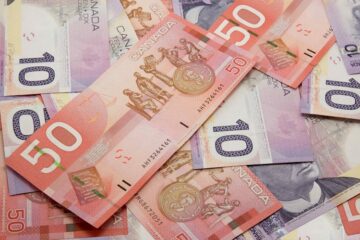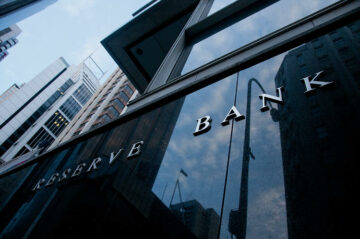- Mexican Peso gains as February’s lower-than-expected inflation fuels speculation of an upcoming Banxico rate cut.
- Mixed signals from Mexico’s CPI data leave markets anticipating key Banxico decision on March 21.
- Cooling US job market and widening trade deficit add complexity to Fed’s policy outlook as Powell reiterates cautious stance.
The Mexican Peso posted minuscule gains against the US Dollar after Mexico’s National Statistics Agency (INEGI) revealed that inflation cooled in February. Therefore, speculation for the Bank of Mexico’s (Banxico) first rate cut looms large. This should weigh on the emerging market currency and underpin the USD/MXN pair. Hence, the exotic pair exchanges hands at 16.88, down 0.13%.
Mexico’s Consumer Price Index (CPI) for February was lower than expected on monthly and annual figures. Nevertheless, underlying CPI came as expected in MoM data, a tick higher compared to January’s reading, but inflation dipped in the annual readings. It remains to be seen whether the conditions are met for Banxico’s first rate cut at the March 21 meeting, and there’s a tranche of data to be released ahead of that date.
In the United States, the job market is cooling. Americans filing for unemployment claims rose above estimates, aligned with the previous week’s data, suggesting the labor market is getting more balanced. At the same time, the US trade deficit widened in January as imports grew more than in December.
At the time of this writing, US Fed Chair Jerome Powell is testifying before the US Senate Banking Committee on Capitol Hill. He is echoing some of Wednesday’s comments, saying that if the economy evolves as expected, the Fed will carefully remove its restrictive policy stance.
Daily digest market movers: Mexican Peso boosted by broad US Dollar weakness
- Mexico’s inflation was 4.40% YoY, below estimates of 4.42% and January’s 4.88%. On a monthly basis, CPI was down from 0.11% to 0.09%.
- Excluding volatile items, the so-called Core CPI rose by 4.64% above forecasts but lower than the previous reading of 4.76%, while monthly figures were aligned with estimates of 0.49%, up from 0.40%.
- Mexican data released previously:
- On Wednesday, Mexico’s consumer confidence index was 47.0 in February when adjusted for seasonal factors. The unadjusted index was 47.1.
- On Monday, Mexico’s economic docket revealed that Gross Fixed Investment in December remained flat MoM. Nevertheless, on an annual basis, it dipped from 19.2% to 13.4%.
- A Reuters poll sees the Mexican Peso depreciating 7% to 18.24 in 12 months from 16.96 on Monday, according to the median of 20 FX strategists polled between March 1-4. The forecast ranged from 15.50 to 19.00.
- A Reuters poll shows 15 analysts estimate that inflation will slow down in February, corroborating bets that the Bank of Mexico (Banxico) could cut rates as soon as the March 21 meeting.
- Mexico’s General Election campaign started on March 1. Polls suggest the ruling party’s nominee, Claudia Sheinbaum, maintains her lead over Xochitl Galvez. Parametria’s poll shows Sheinbaum’s support at 49%, while Galvez, the opposition candidate, stands at 29%.
- Banxico’s private analytics poll projections for February were revealed. They expect inflation at 4.10%, core CPI at 4.06%, and the economy to grow 2.40%, unchanged from January. Regarding monetary policy, they see Banxico lowering rates to 9.50% and the USD/MXN exchange rate at 18.31, down from 18.50.
- During Banxico’s quarterly report, policymakers acknowledged the progress on inflation and urged caution against premature interest rate cuts. Governor Victoria Rodriguez Ceja said adjustments would be gradual, while Deputy Governors Galia Borja and Jonathan Heath called for prudence. The latter specifically warned against the risks of an early rate cut.
- Banxico updated its economic growth projections for 2024 from 3.0% to 2.8% YoY and maintained 1.5% for 2025. The slowdown is blamed on higher interest rates at 11.25%, which sparked a shift in three of the five governors of the Mexican Central Bank, who are eyeing the first rate cut at the March 21 meeting.
- Economic trade issues between Mexico and the US could depreciate the Mexican currency if the Mexican government fails to resolve its steel and aluminum dispute with the United States. US Trade Representative Katherine Tai warned the US could reimpose tariffs on the commodities.
- US economic data hurt the prospects for a higher USD/MXN, with buyers failing to keep the exchange rate above 17.00.
- The political race is almost defined in the United States after Super Tuesday. Former President Donald Trump leads the Republicans with 995 delegates, shy of the 1,215 needed. On the Democratic side, US President Joe Biden leads with 1,497 delegates, short of the 1,968 needed.
- The Initial Jobless Claims for the week ending March 2 were 217K, surpassing estimates and the previous reading of 215 K.
- The US Balance of Trade was $-67.4 billion, exceeding estimates of $-63.5 billion and higher than December’s $-64.2 billion.
- As Fed Chair Jerome Powell testifies, the CME FedWatch Tool shows traders increased their bets for a 25-basis-point rate cut in June from 52.7% a week ago to 71.9%.
Technical analysis: Mexican Peso advance continues as USD/MXN holds firm below 16.90
The USD/MXN downtrend remains intact, with sellers keeping the exchange rate below 16.90. If they push the pair below the year-to-date (YTD) low of 16.78, look for a deeper correction past last year’s 16.62 low. Initial targets are October 2015’s low of 16.32 and the 16.00 mark.
On the other hand, if buyers reclaim the 17.00 figure, that could open the door to testing the 50-day Simple Moving Average (SMA) at 17.05, followed by the 200-day SMA at 17.24 and the 100-SMA at 17.38.
USD/MXN Price Action – Daily Chart
Banxico FAQs
The Bank of Mexico, also known as Banxico, is the country’s central bank. Its mission is to preserve the value of Mexico’s currency, the Mexican Peso (MXN), and to set the monetary policy. To this end, its main objective is to maintain low and stable inflation within target levels – at or close to its target of 3%, the midpoint in a tolerance band of between 2% and 4%.
The main tool of the Banxico to guide monetary policy is by setting interest rates. When inflation is above target, the bank will attempt to tame it by raising rates, making it more expensive for households and businesses to borrow money and thus cooling the economy. Higher interest rates are generally positive for the Mexican Peso (MXN) as they lead to higher yields, making the country a more attractive place for investors. On the contrary, lower interest rates tend to weaken MXN. The rate differential with the USD, or how the Banxico is expected to set interest rates compared with the US Federal Reserve (Fed), is a key factor.
Banxico meets eight times a year, and its monetary policy is greatly influenced by decisions of the US Federal Reserve (Fed). Therefore, the central bank’s decision-making committee usually gathers a week after the Fed. In doing so, Banxico reacts and sometimes anticipates monetary policy measures set by the Federal Reserve. For example, after the Covid-19 pandemic, before the Fed raised rates, Banxico did it first in an attempt to diminish the chances of a substantial depreciation of the Mexican Peso (MXN) and to prevent capital outflows that could destabilize the country.
- SEO Powered Content & PR Distribution. Get Amplified Today.
- PlatoData.Network Vertical Generative Ai. Empower Yourself. Access Here.
- PlatoAiStream. Web3 Intelligence. Knowledge Amplified. Access Here.
- PlatoESG. Carbon, CleanTech, Energy, Environment, Solar, Waste Management. Access Here.
- PlatoHealth. Biotech and Clinical Trials Intelligence. Access Here.
- Source: https://www.fxstreet.com/news/mexican-peso-inches-up-as-inflation-cools-banxico-rate-cut-speculation-rises-202403071718
- :is
- $UP
- 00
- 05
- 1
- 11
- 12
- 12 months
- 13
- 15%
- 16
- 17
- 19
- 2%
- 20
- 2024
- 2025
- 21
- 24
- 31
- 32
- 4
- 5
- 50
- 52
- 62
- 9
- 90
- a
- above
- According
- acknowledged
- Action
- add
- Adjusted
- adjustments
- advance
- After
- against
- agency
- ago
- ahead
- aligned
- almost
- also
- Americans
- an
- analysis
- Analysts
- analytics
- and
- annual
- anticipates
- anticipating
- ARE
- AS
- At
- attempt
- attractive
- average
- Balance
- balanced
- BAND
- Bank
- Banking
- basis
- BE
- before
- below
- Bets
- between
- biden
- Billion
- Boosted
- borrow
- broad
- businesses
- but
- buyers
- by
- called
- came
- Campaign
- candidate
- capital
- capitol
- carefully
- caution
- cautious
- central
- Central Bank
- Chair
- chances
- claims
- Close
- CME
- comments
- committee
- Commodities
- compared
- complexity
- conditions
- confidence
- Confidence Index
- consumer
- consumer price index
- continues
- contrary
- Core
- could
- country
- country’s
- COVID-19
- COVID-19 pandemic
- CPI
- CPI data
- Currency
- Cut
- cuts
- daily
- data
- Date
- December
- decision
- Decision Making
- decisions
- deeper
- DEFICIT
- defined
- delegates
- democratic
- depreciate
- depreciation
- deputy
- DID
- Digest
- Dispute
- doing
- Dollar
- donald
- Donald Trump
- Door
- down
- Early
- Economic
- Economic growth
- economy
- eight
- Election
- emerging
- emerging market
- end
- ending
- estimate
- estimates
- evolves
- example
- exceeding
- exchange
- Exchange rate
- Exchanges
- Exotic
- expect
- expected
- expensive
- factor
- factors
- failing
- fails
- FAQ
- February
- Fed
- Fed Chair
- Fed Chair Jerome Powell
- Federal
- federal reserve
- Figure
- Figures
- Filing
- Firm
- First
- five
- fixed
- flat
- followed
- For
- For Investors
- Forecast
- forecasts
- forex
- Former
- from
- fuels
- FX
- Gains
- General
- generally
- getting
- Government
- Governor
- governors
- gradual
- greatly
- grew
- gross
- Grow
- Growth
- guide
- hand
- Hands
- he
- hence
- her
- higher
- holds
- households
- How
- HTTPS
- Hurt
- if
- imports
- in
- increased
- index
- inflation
- influenced
- initial
- interest
- INTEREST RATE
- Interest Rates
- investment
- Investors
- issues
- IT
- items
- ITS
- January
- jerome
- jerome powell
- Job
- jobless claims
- joe
- Joe Biden
- jonathan
- june
- Keep
- keeping
- Key
- key factor
- known
- labor
- labor market
- large
- Last
- latter
- lead
- Leads
- Leave
- levels
- Look
- looms
- Low
- lower
- lowering
- Main
- maintain
- maintained
- maintains
- Making
- March
- March 1
- mark
- Market
- Markets
- measures
- meeting
- Meets
- met
- Mexico
- Mission
- mom
- Monday
- Monetary
- Monetary Policy
- money
- monthly
- months
- more
- Movers
- moving
- moving average
- National
- needed
- Nevertheless
- objective
- october
- of
- on
- open
- opposition
- or
- Other
- outflows
- Outlook
- over
- pair
- pandemic
- past
- Peso
- Place
- plato
- Plato Data Intelligence
- PlatoData
- plunges
- policy
- policymakers
- political
- poll
- polls
- positive
- posted
- Powell
- Premature
- preserve
- president
- President Donald Trump
- president joe biden
- prevent
- previous
- previously
- price
- PRICE ACTION
- private
- Progress
- projections
- prospects
- Push
- Race
- raised
- raising
- Rate
- Rates
- Reacts
- Reading
- regarding
- released
- remained
- remains
- remove
- report
- representative
- Republicans
- Reserve
- resolve
- Restrictive
- Reuters
- Revealed
- risks
- ROSE
- ruling
- s
- Said
- same
- saying
- seasonal
- see
- seen
- sees
- Sellers
- Senate
- senate banking
- set
- setting
- shift
- Short
- should
- Shows
- side
- signals
- Simple
- slow
- Slowdown
- SMA
- So
- some
- sometimes
- Soon
- sparked
- specifically
- speculation
- stable
- stance
- stands
- started
- States
- statistics
- steel
- strategists
- substantial
- suggest
- Super
- support
- surpassing
- Target
- targets
- tariffs
- tend
- Testing
- than
- that
- The
- the Fed
- The US Federal Reserve
- their
- therefore
- they
- this
- three
- Thus
- tick
- time
- times
- to
- tolerance
- tool
- traction
- trade
- Traders
- trump
- Tuesday
- underlying
- underpin
- unemployment
- United
- United States
- upcoming
- updated
- urged
- us
- US Dollar
- US Federal
- us federal reserve
- US President
- US Senate
- USD
- usually
- v1
- value
- Victoria
- volatile
- warned
- was
- Wednesday
- week
- weigh
- were
- when
- whether
- which
- while
- WHO
- will
- with
- within
- would
- writing
- year
- yields
- zephyrnet


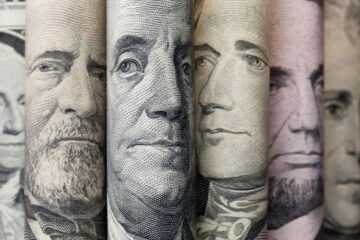
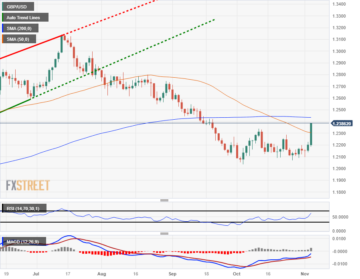
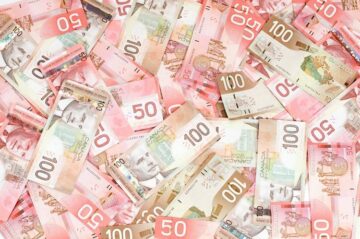

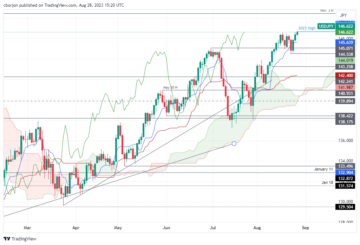


![High on Hilton? [Video]](https://platoaistream.net/wp-content/uploads/2023/02/high-on-hilton-video-360x240.jpg)


